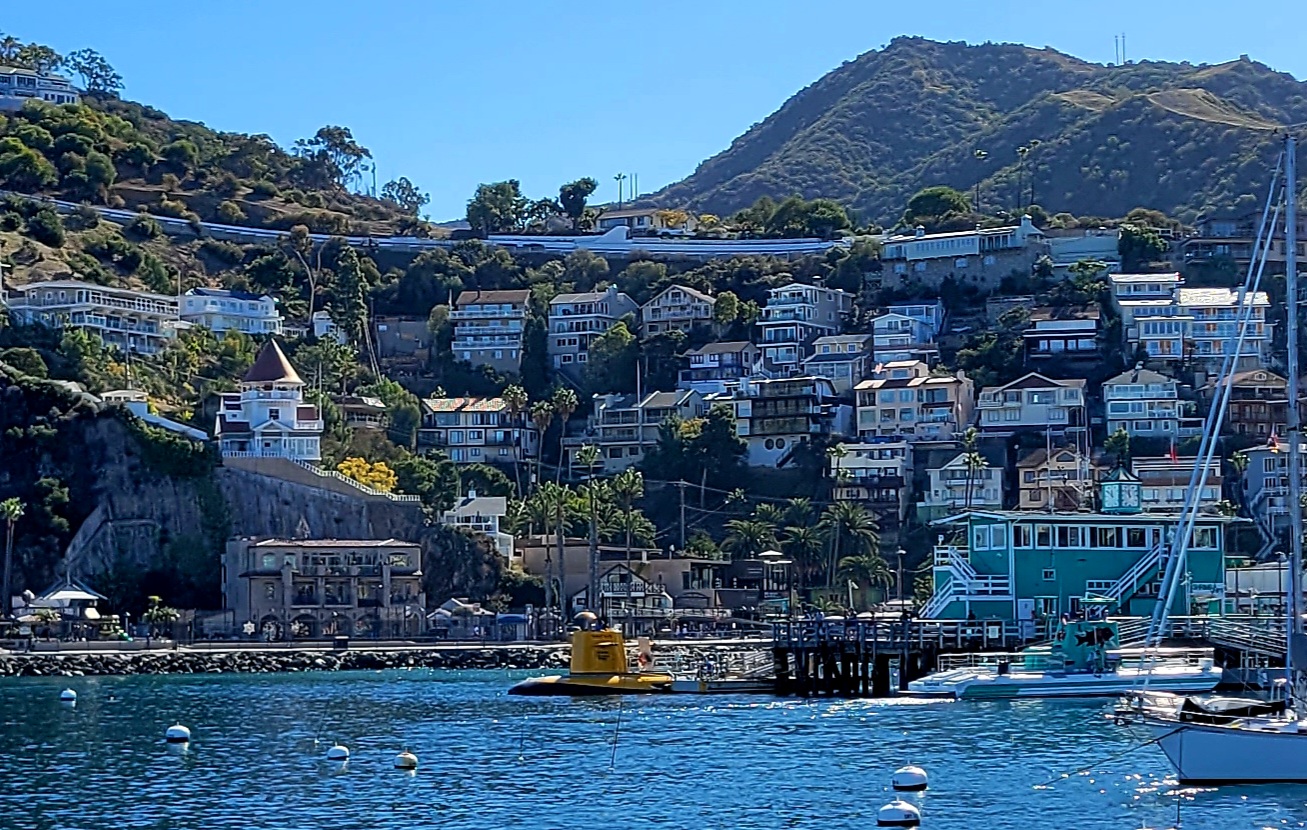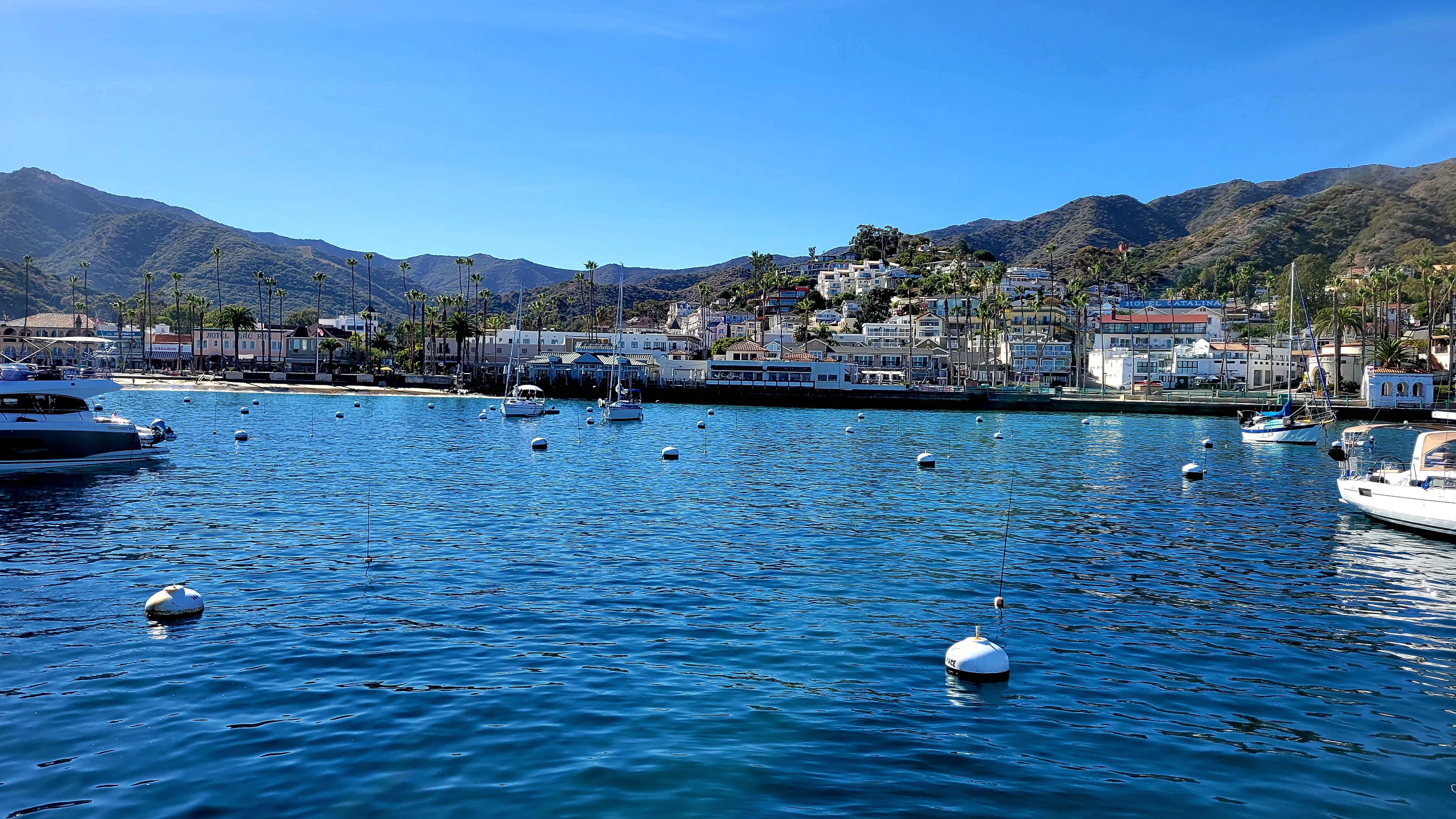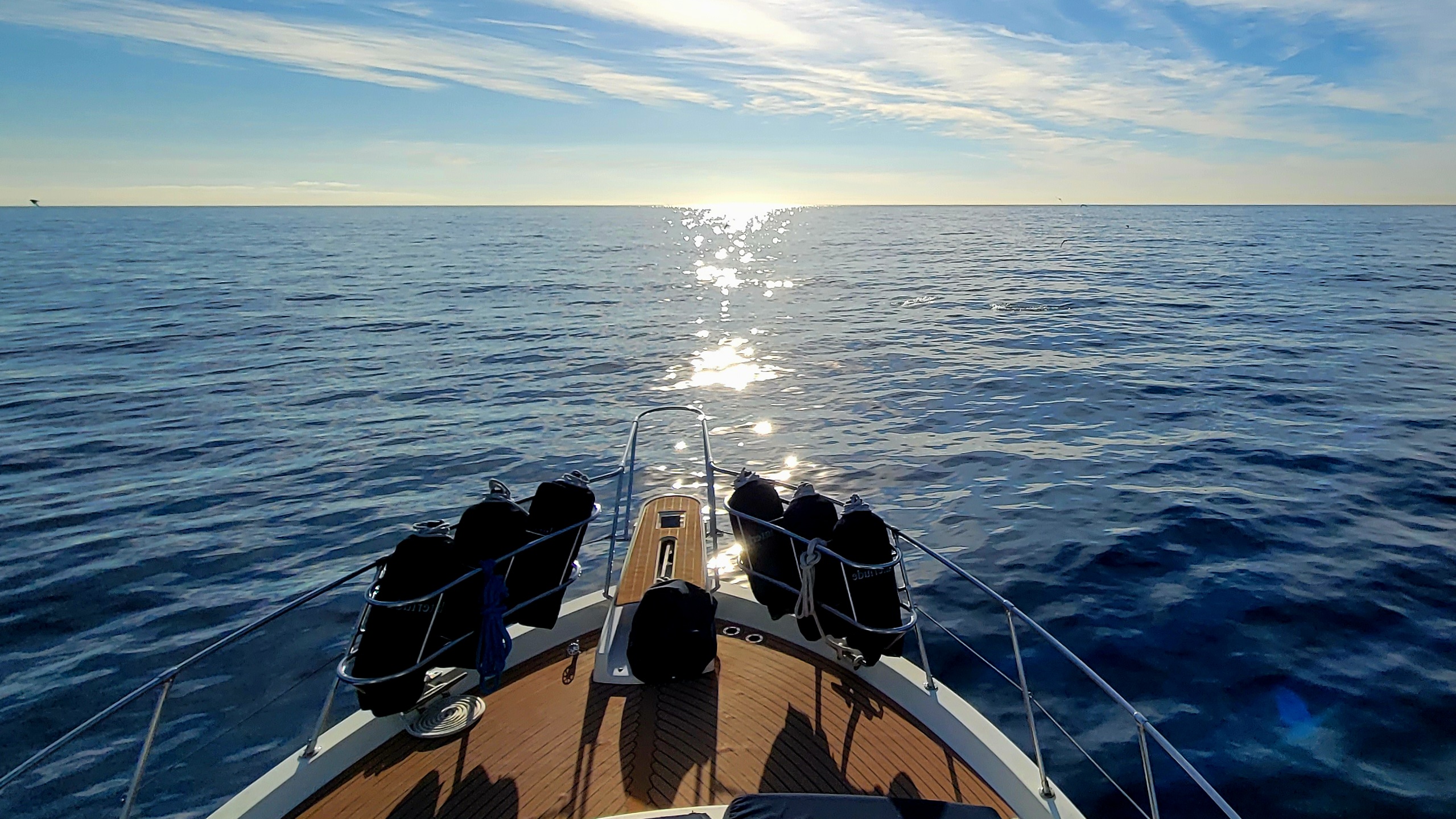Living in Ventura County, I often spend the holiday with my family at Catalina Island, a very popular destination 26 miles off the Southern California Coast and 66 miles from my Port at Channel Islands Harbor. While enjoying the perfect weather, I started thinking about all the wonderful new boaters that come to Boat Specialists for boat and dinghy purchases, supplies, service, and general boating conversation.
Heading to Catalina is typically one of the first trips new boaters in the Southern California area want to make. Securing to a mooring and then to the dinghy dock can be intimidating when doing it for the first time. I wanted to share some personal thoughts from my experiences, both successes and mess-ups, as learning opportunities for our readers.
Catalina has many mooring coves, but the two main destinations are Avalon Harbor and The Isthmus at the West End. To get a mooring at Avalon, you will need to wait outside the Harbor and a Harbor Patrol Boat will come to meet you and assign you a mooring number and take payment. At Isthmus, use your VHF Radio on Channel 9 or cell phone to call the Isthmus Harbor Master. They will assign you a mooring number and stop by your mooring later to collect payment. Moorings are set in rows, so always ask for the mooring number at the end of the row; that way, you will know where to make your turn.
Instructions to pick up and leave a mooring, with diagrams, can be found on Visit Catalina's website Mooring Info and Rules. This page provides easy-to-understand technical aspects that will help make your first time to Catalina a breeze. Following are a few practical things to keep in mind.

1. On a calm day, approach the Mooring Pick up Pole slowly. Look at the other boats in the row to see the side their mooring hawser is tied to. You will tie up on the same side to keep a proper distance between boats as tide changes occur.
2. If it is a heavy wind day or you feel uncomfortable due to the number of boats in the Harbor, request if you can have a Harbor Patrol Boat assist by standing by. They will gladly help you, but you may need to hold outside the Harbor for their availability. I have asked for assistance on windy days when I was single-handed on my 43' Tollycraft M/Y. It also gives you an opportunity to get to know your friendly Harbor Patrol Captains.
3. If you will stay the night, keep the Pickup Pole on deck so you do not have to listen to it hitting your bow while trying to sleep at night. You can run a dock line through the Stern Hawser loop to allow for tide adjustments or if the mooring is a bit longer than your boat length. This also makes it easier to leave the mooring when you drop the Stern Hawser. When departing, make sure the mooring lines have all sunk well below the water line before putting the boat in gear. You want to avoid wrapping the line around your Prop. Many have done it, including myself. If it happens, stay calm, call the Harbor Patrol, and fend off other boats if necessary.
4. Most importantly, as you approach the mooring and you see other boaters pull out their deck chairs and grab a beer to watch, just smile, give a quick wave and pick up like you've done this many times before. You've got this!
Once you're secured to the mooring and double-checked that the lines are secure, you will want to travel to shore on that new Dinghy or Tender you bought from Boat Specialists. You will find a Dinghy Dock attached to the Pier, that is your tie-up destination. Here are a few things to be aware of.

1. Dinghy length is limited to 14', especially on busy summer weekends.
2. Do not tie sideways to the dock. You will want to have a painter line attached to the bow of your dinghy. This is a single line, about 12" in length, tied off to your tow ring under the bow tube or a cleat on the bow. This single line is what you will use to secure your dinghy to the dock.
3. When you get to the dock, you will step off the dinghy's bow with line in hand. If other passengers are getting off, hold the dinghy's bow tight against the dock with the line to allow them to disembark easily. A hand for them to grab is always welcome.
4. There are wood rails along the edge of the dock. You do not need to find a cleat to tie to. Run the line under the rail and tie a bowline knot. Let your dinghy float away from the dock to allow other boats easy access.
5. Now, when you approach the dock on a busy day, you may find a crowd of boats that look two or three deep in front of the dock. This is why we let our boats float away from the dock once tied. The painter line should allow the dinghy to float 10' feet from the dock. Approach slowly and look for your best opening. Nose your dinghy in; you may need to push other boats away from each side of your boat. Hand walk your boat forward with maybe a little forward kick from your outboard motor. Slow and easy and not tying off too close to the dock allows everyone an enjoyable experience.

Hopefully, this gives valuable insight for boaters adventuring to Catalina Island for the first time. If you would like to learn more, come on down to our friendly showroom, and we'd be happy to answer any questions you may have.

About the Author. Dave Fabian is a Sales Consultant at Boat Specialists in Ventura, CA. With more than 50 Years of Boating Experience, he spent his early years sailing out of Newport Harbor and now resides in Channel Islands Harbor. He and his family enjoy cruising on their 43' Motor Yacht, "Interlude". Dave has an Engineering Degree from Tulane University and spent his spare college time sailing on Lake Pontchartrain and skiing on the Bayou while waving at the Alligators.
